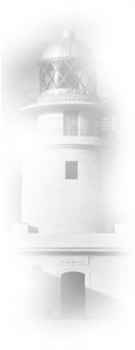RESEARCH > Classic sources
 In this section we deal with the information presented by different sources to know in brief the nature of the Sanisera archaeological site. In this section we deal with the information presented by different sources to know in brief the nature of the Sanisera archaeological site.
In the following paragraphs we will briefly cite the classic sources that mention or talk about the city of Sanisera. This is just to familiarize the reader with the site, without getting into the different issues, as there are several publications and studies that deal with the subject. We consider it convenient to concentrate on the newest information coming from the recent excavations. Studies prepared by archaeologists such J. C. de Nicolás (NICOLÁS,1983), Muñoz (MUÑOZ, 1974) or C. Blanes (BLANES, 1990) compile, review and combine classic sources with modern archaeological information. And for this reason, we think it better that whoever wishes to get deeper into the subject, should check the bibliography for a better study of classic sources.
Classic sources
We present here the only reference that mentions the existence of the Roman city of Sanisera, well known in the historical references about Romanization in Minorca.
Pliny, procurator in the Roman province of Hispania Citerior during the reign of Vespasian, in his work, Naturalis Historia, III, 781 , comments on the cities of Minorca, mentioning the cities of Iamo, Sanisera and Mago.
(1) “... The Baleares, so formidable in war with their slingers, have received from the Greeks the name of Gymnasiæ. The larger island is 100 miles in length, and 475 in circumference. It has the following towns; Palma and Pollentia, enjoying the rights of Roman citizens, Cinium and Tucis, with Latin rights: Bocchorum, a federate town, is no longer in existence. At thirty miles' distance is the smaller island, 40 miles in length, and 150 in circumference; it contains the states of Jamnon, Sanisera, and Magon. In the open sea, at twelve miles' distance from the larger island, is Capraria with its treacherous coast, so notorious for its numerous shipwrecks; and, opposite to the city of Palma, are the islands known as the Mænariæ, Tiquadra, and Little Hannibalis.
”The earth of Ebusus has the effect of driving away serpents, while that of Colubraria produces them; hence the latter spot is dangerous to all persons who have not brought with them some of the earth of Ebusus. The Greeks have given it the name of Ophiusa. Ebusus too produces no rabbits to destroy the harvests of the Baleares." (Pliny. Naturalis Historia, Book III).
|



